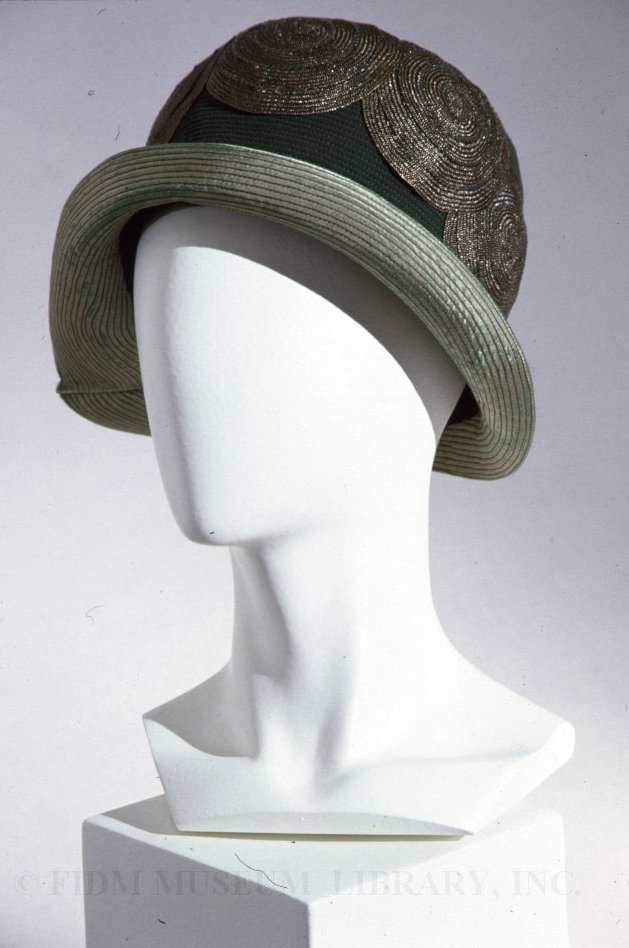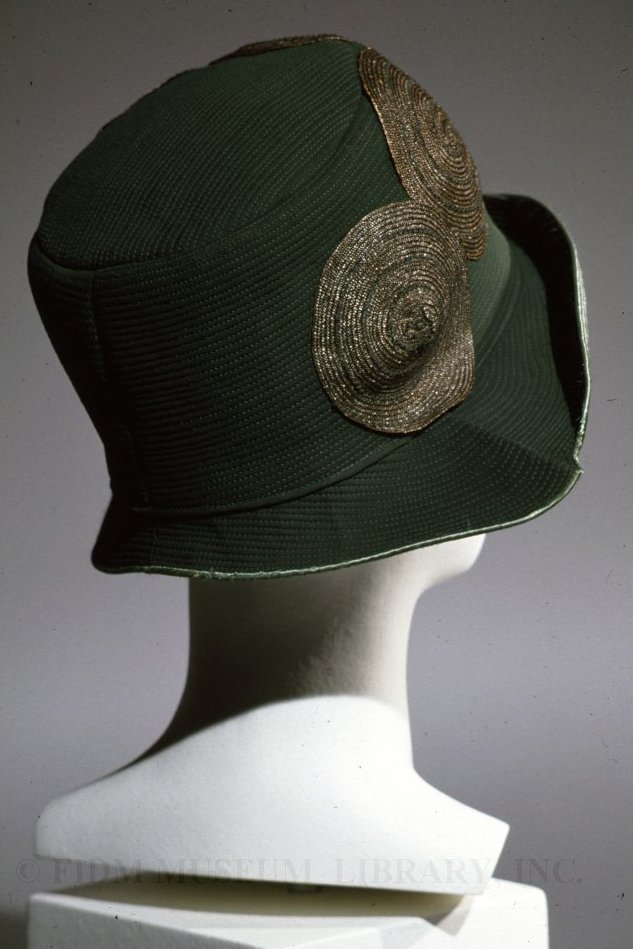The close-fitting cloche is the headwear most closely associated with the 1920s. Worn throughout the decade, the streamlined fit of the cloche complemented the slim lines of 1920s dress. Unlike hats of the previous decade, which often featured dimensional decoration of feathers, flower or tulle, the cloche featured relatively minimal embellishment. In 1927, a New York Times fashion reporter lamented the popularity of "the simple, unadorned cloche," suggesting that milliners were in despair over the widespread preference for its straightforward shape and modest decoration.1
 Cloche
Cloche
c. 1925
Museum Purchase
81.25.6
In the early years of the decade, the lines of the cloche was especially severe. The popular shape was similar to a slim, elongated bell and had little or no brim. Worn low over the eyebrows and covering the hair, the cloche obscured the face and become the focal point. As the decade progressed, the shape of the cloche evolved, with softened silhouettes appearing mid-decade. Asymmetrical brims, often incorporating curves or folds, complicated the lines of the cloche and provided a more flattering frame for the face. Our green cloche, with its flared and folded brim, dates from mid-decade.
With five dark green roundels circling the brim, our cloche features the low-profile embellishment favored for the style. The contrast provided by the light green, upturned brim creates additional interest, as does the subtle texture of the allover quilting. The interior is lined with black silk satin. As there is no extant label, we have no information about its origins or maker.
The snug fit of a cloche relied on a specific hairstyle: the bob. A mass of long hair, fixed in a complicated knot or pouf, simply would not fit under a tight-fitting cloche. To be in fashion, a daring bob was mandatory. As long hair was considered an important component of femininity and a sign of respectability, the short bob caused no end of controversy. A 1924 article claimed that short hair was associated primarily with "women bandits, flask totters, daring dresses and risque dancing."2 Though the latter part of this accusation probably had some merit, these critiques indicate the level of controversy created by the fashion for bobbed hair. The article goes on to describe several marital conflicts involving bobbed hair, including one husband in Chicago who sued his wife for clipping her hair into a "King Tut" bob. The judge in this case sided with the wife, stating that since women had the right to vote, they were certainly capable of choosing a hairstyle.
1 "Small Shapes Favored Again." New York Times 27 Nov. 1927: X16.
2 "Wives Have Right to Bob Their Hair!" The Washington Post 6 July 1924: SM5.


